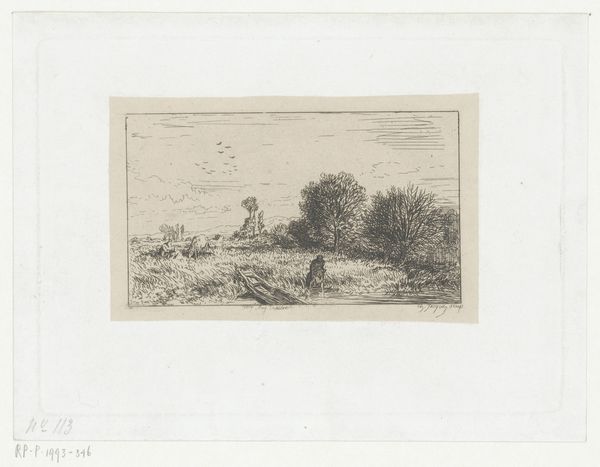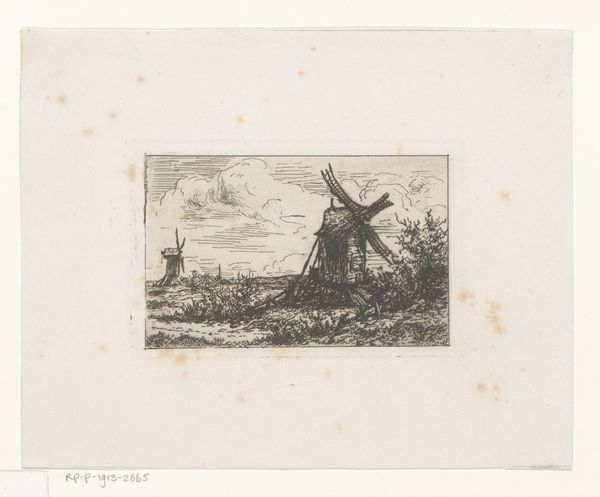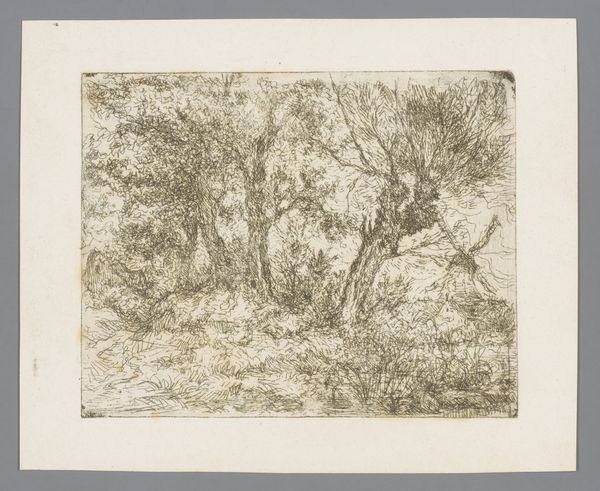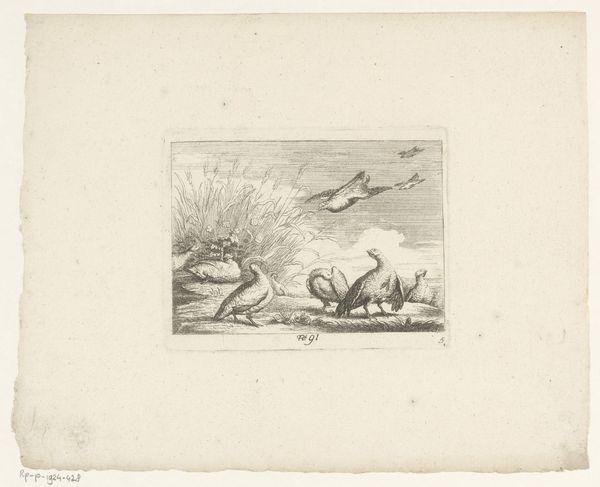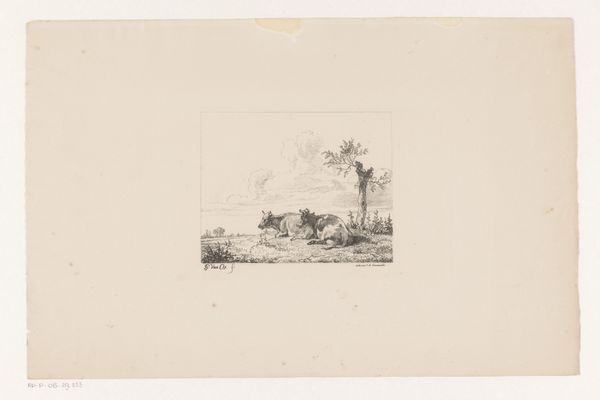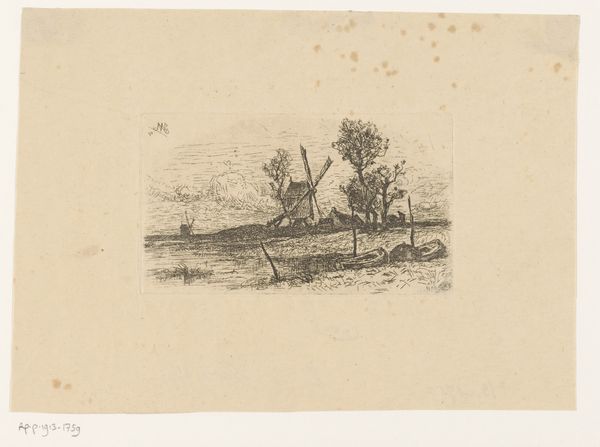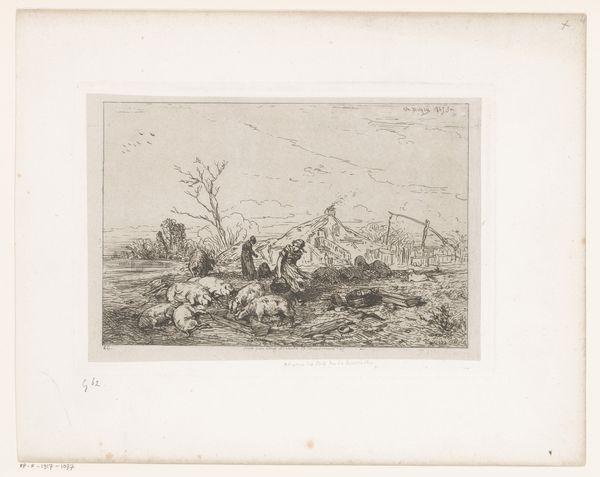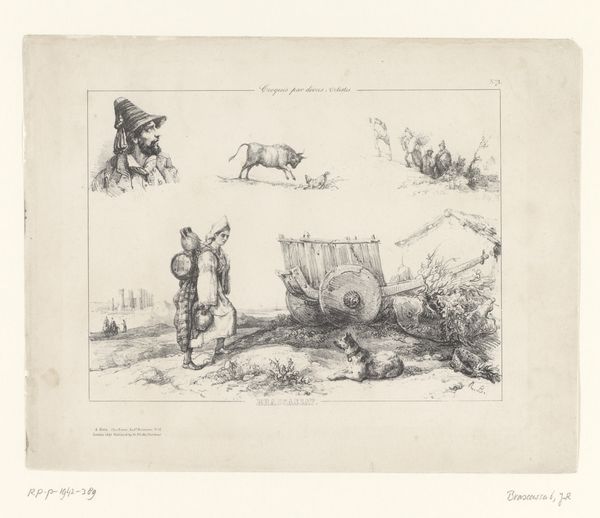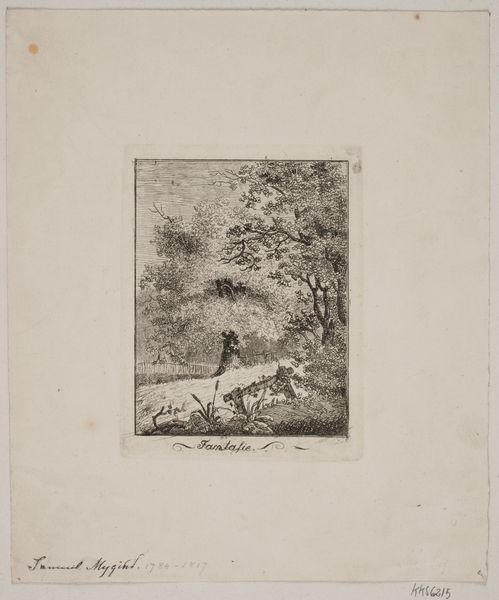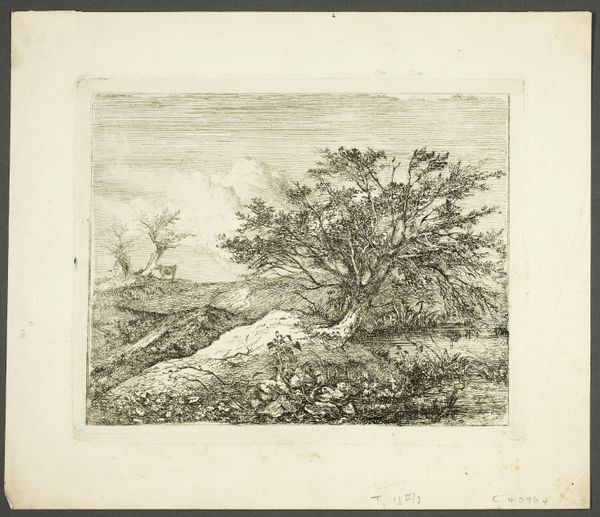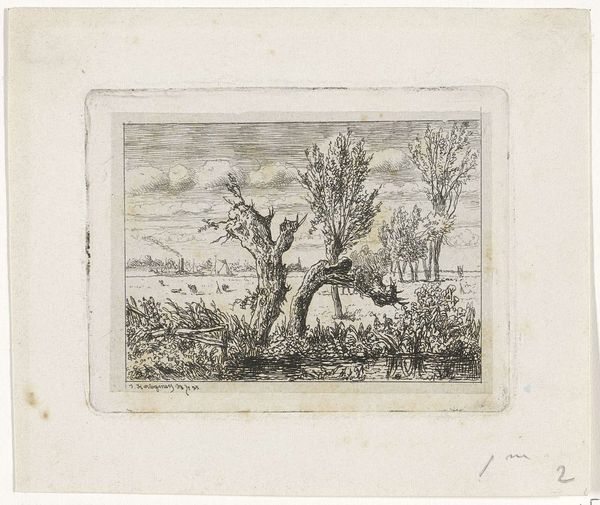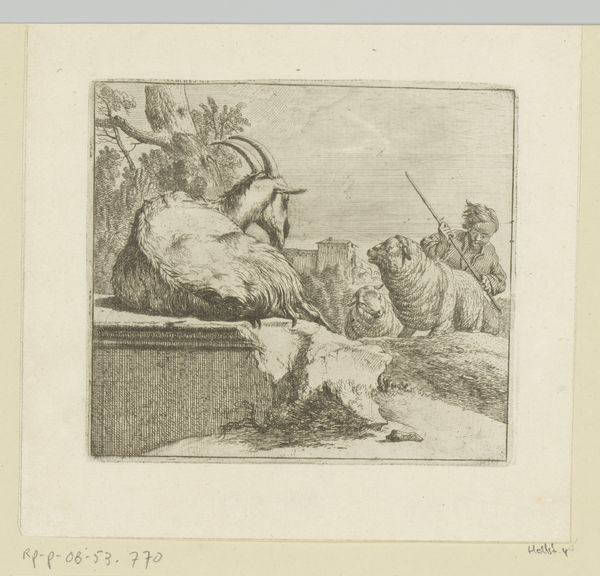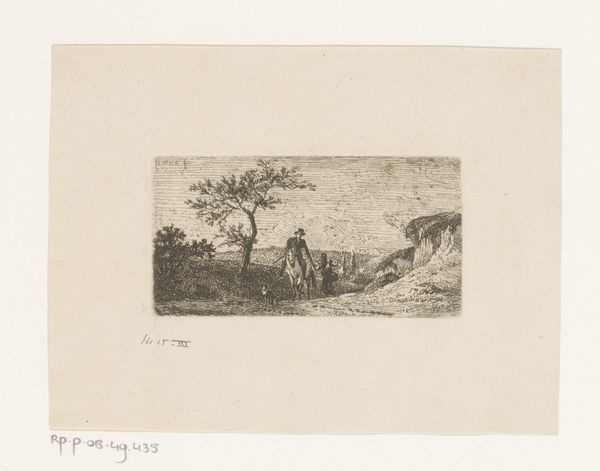
print, etching
# print
#
etching
#
landscape
#
romanticism
#
realism
Dimensions: height 145 mm, width 137 mm
Copyright: Rijks Museum: Open Domain
Curator: Let’s take a look at “Gezicht op een boerderij,” or “View of a Farmhouse,” created by Henri-Joseph Harpignies in 1849. It's an etching, a print, currently held here at the Rijksmuseum. Editor: My first impression is one of quietude. It’s monochromatic, a tight composition dominated by the textures of the thatched roofs and unkempt foliage. Somber, even. Curator: Interesting. Harpignies was working in a period where Realism was gaining traction, pulling artists away from idealized landscapes. The print almost certainly draws on memories and feelings associated with a humble rural past, as seen through Romanticism’s focus on nature and emotion. Editor: So, you’re saying this image fits neatly into art historical categories of Realism and Romanticism? How does its message then engage with a broader public, outside the label of “landscape?" Curator: Note how the low horizon line emphasizes the buildings themselves. They seem huddled together, protective. The lone figure near the gate reinforces that feeling of intimate domesticity, in contrast to the encroaching "wildness" of nature. Perhaps it subtly reflects the social concerns of the era—rural life in flux, anxieties about industrialization? Editor: Absolutely. I'm looking at the symbolism of the rural landscape becoming almost a character in itself. Its weathered structures tell tales of continuity but the slightly menacing sky suggests something unsettling, which also evokes folk stories where weather becomes a metaphor for changes and threats in our lives. Curator: Considering Harpignies made this print relatively early in his career, one might see the composition as reflecting broader artistic shifts in France at the time. The democratization of imagery and the emergence of print media… a direct response to larger cultural movements. Editor: Yes, and it challenges viewers to question their relationship with the changing world through the stability of a traditional life and rural place… the tension between preserving and evolving cultural landscapes. Curator: Overall, Harpignies, whether intentionally or not, delivers a work steeped in its time—a social artifact—yet resonating with universal longing. Editor: And it reveals a continued resonance today because such scenes have the power to remind viewers about human endurance.
Comments
No comments
Be the first to comment and join the conversation on the ultimate creative platform.
